| Posting Rules | | post new threads post replies post attachments edit your posts is are code is are are are | | Similar Threads | | Thread | Thread Starter | Forum | Replies | Last Post | | 380: | 3Eagles | Lagoon Catamarans | 23 | 28-02-2013 18:25 | | | Finditsurfit | Classifieds Archive | 4 | 22-08-2009 11:16 | | | SkiprJohn | Multihull Sailboats | 6 | 12-08-2007 21:03 | Privacy Guaranteed - your email is never shared with anyone, opt out any time. - ABOUT THIS SITE
- NEWSLETTER SIGNUP
Monday, January 14, 2008The wharram tiki 21 catamaran.  No comments:Post a comment.  Popular Posts All Posts by Topic- wharram catamarans (35)
- boatbuilding (28)
- boat design (20)
- sailing (15)
- voyages (14)
- boat designers (13)
- boat for sale (11)
- kayaking (11)
- boating gear (7)
- book review (7)
- canoeing (6)
- seamanship (6)
- boat buying (5)
- cruising (5)
- launchings (5)
- online resources (5)
- boat camping (4)
- boat refit (4)
- boatbuilding materials (4)
- magazines (4)
- monohulls (4)
- my books (4)
- rivers and swamps (4)
- sailboats (4)
- survival (4)
- Gulf of Mexico (3)
- James Wharram (3)
- boat shows (3)
- sailing fiction (3)
- sharpies (3)
- Cape Dory 27 (2)
- Caribbean (2)
- Carl Alberg (2)
- Kruger Canoes (2)
- Kruger Sea Wind (2)
- Reuel Parker (2)
- boat maintenance (2)
- boat review (2)
- gear review (2)
- marine carpentry (2)
- multihulls (2)
- navigation (2)
- oil spill (2)
- other stuff (2)
- paddling (2)
- projects (2)
- Sailing the Apocalypse (1)
- beachcruising (1)
- book giveaway (1)
- circumnavigation (1)
- cruising destinations (1)
- environment (1)
- expeditions (1)
- great deals (1)
- living aboard (1)
- rowing craft (1)
- the sea (1)
Archive of All Posts by Month- January (1)
- September (1)
- December (1)
- November (1)
- September (2)
- January (2)
- February (1)
- October (1)
- October (3)
- January (3)
- December (5)
- December (2)
- November (2)
- February (5)
- January (18)
 James Wharram Designs Unique self-build sailing catamarans, inspired by the double canoes of the Polynesians Your basket is currently empty! Tiki 38 TestedI must thank Lee Shipley, Ben Mullet, Colin Flynn for their recent discussion on aspects of Wharram Catamarans on our Web Forum between 16 January and 4 February (under headings NARAI Mk IV and Tiki 46 Rig). Lee Shipley for writing about the advantages on open decks, i.e. no or minimum deck cabins, Ben Mullet on the advantages of the Wharram Soft Wingsail (often called the Tiki Rig), and Colin Flynn as to why a Wharram Catamaran is unsuitable for many would-be Wharram Catamaran owners, beginning with himself. In the February/March issue of the French multihull magazine, Multihull-World/Multicoques, a newly launched Tiki 38 was given a test sail. The boat in question was Kaimiloa, built by Dominique Naulet. The test sail shows a total stranger’s view of aspects of the Wharram Design, and the comments are interesting.  Multicoques/Multihull-World wrote: “These boats aren’t often seen in our yachting harbours, for a simple reason: they sail far, very far, where there are no marinas, in the land of the sun, where these strange catamarans quietly pull on their anchor chain, while their crews relax and laze about on the trampoline… A boat designed by James Wharram is like no other boat. It is a catamaran. But James Wharram’s catamarans are like no other catamarans. Moreover, the owners of Wharram Boats are not like other people either. They seem inspired by a kind of faith, they seem to be on a quest for a certain quality of life, which finds its fulfilment in the realization of their boat. The Wharram is above all a state of mind. These boats are designed for living on the water, a minimalist version of the cruising multihull; they are created to cast off for the sunniest parts of the planet, preferably between 20o latitude North and 20o latitude South. The only possible connection between a catamaran mass-produced in one of our French x- or other boatyards, and a boat designed by James Wharram, is the number of hulls. Beyond that, everything is different: the motors, the rigging, the liveability, the materials and the cost. The concept from the start of Wharram’s Polynesian catamarans is expressed in their simplicity. Why be complicated when you can be something simple?” Well, trust a Frenchman to get to the heart of design philosophy. I tell students who at times study in this office that all designers have an inner philosophy, which affects aspects of their designs. At the moment, I am writing an article, provisionally called: ‘I steered a Viking ship’, which contains these socio-philosophical reflections: “What stops so many would-be sailors nowadays owning such craft [i.e. a Viking-style ship], is that their perceptions have been warped by modern urban living and the expectations of urban living. Modern urban man travels in his sealed luxury ‘car pod’ to his/her centrally heated office, then back to a centrally heated, carpeted floor house. For exercise he/she joins an expensive gym, where he/she runs on a treadmill like a hamster or a 19th century convict. All the time protected from the wind, the rain and the sun. The Vikings protected their bodies comfortably from cold and wet with wool and oiled leather. We have yachting clothing today which is as good. So we have the small boat design, we have the protective clothing. All we need now to have a new renaissance in modern sailing man, is to drop the comfort perceptions of urban city man.” The philosophical attitude in that article paragraph is reflected in our catamaran designs by the open centre decks, sometimes with a steering pod added. Here is how the French Tiki 38 boat-tester saw the open deck concept: “Let’s take the time to have a closer look at the platform. When climbing onboard, the first impression is that of entering a vast space, with the central part made up of slats, and the front of a trampoline. This feeling is further reinforced by the lack of any true roof – only the cockpit stands out. This is essentially an area for the running rigging – where almost all is centralized. At anchor, if the weather (the wind) does not make it possible to stay on the fore platform, it is always possible to find refuge in the cockpit, where you can be seated and very well protected.” Add the steering pod cockpit shelter to the sturdy deck tent mentioned by Lee Shipley, and sheltered harbour living space extends enormously on the Wharram Catamarans. Then the sailing capabilities on the Tiki 38 were described in Multihull World in these paragraphs: “The breeze is rather light, under 10 knots, and at 45o of true wind, Kaimiloa is sailing faster than 5 knots. The thin bows and flared hulls forming a ‘V’ at the tip facilitate passage in the water. The wind increases and shifts, we bear away slightly, the speed increases: at 60o off the wind, with 10 knot winds, we advance calmly at 6 knots on a sea that is still flat. At the helm, the Tiki is lively, even though the excitement is somewhat damped, partly because of the nature of the tiller wheel ropes, made up of pre-stretched rope; but that’s the price of the Wharram spirit. Wire ropes would make the helm more sensitive. But have you ever tried to explain to an aficionado of Ducati twins the melody of a 4-cylinder engine? In front of us, a big squall fills the horizon, the sun takes advantage of this to offer us a magic festival of colour, while the wind increases: 12 knot wind, the speed rises to 6.5 knots. The breeze blows in gusts, with each one, the boat accelerates frankly, at 15 knots of wind, always close reach, we exceed 8 knots. We are crossing the swell from the open sea – about 1 metre – the boat passes into the waves perfectly, with gentle movements, truly a joy! The strength of the Wharram is in her flexibility. Seated on the port roof, in the wind, with my feet on the platform, I can feel she’s alive… I mean, she’s moving, since she is attached to her hulls only with braided rope! It’s time for cocktails (testing a boat is a real job and isn’t easy every day…)” “We’ve been at sea for 2 hours, it’s time to turn back. Jibing is done gently, thanks surely to the fact there’s no boom: all the sails quietly change their tack, and at broad reach, at 8 knots with 15-17 knot winds, we sail quietly back to Port Morin. Sailors know it: downwind the sea is fine. The Tiki is no exception, the jerking we felt earlier while sailing upwind have obviously disappeared; it’s a pleasure to glide. With a few degrees more, we could have thought ourselves between Hiva-Oa and Fatu-Hiva, pushed by a strong tradewind… Back at the anchorage, mooring is no problem at all. With her two motors, the boat almost turns on a dime.” I think that Ben Mullet and the many others who appreciate the Tiki rig would add to that description: “With more experience could do better.” Under the heading ‘Life on Board’, the magazine made these comments: “And what about the inside? Sheer heaven… For those who prefer the comfy interiors with luxury appointments… of course, the liveability has nothing to do with what you usually find. Yet the features are functional and cosy. The two little roofs, 25 cm each, provide good headroom.” Well, coming from the world of French luxury charter catamarans, the boat test crew obviously found nothing luxurious to rave about in the cabin space. The magazine’s conclusions were as follows: “The Tiki 38 is a surprising boat in more ways than one. First of all, it has nothing to do with other catamarans of its size, whether in displacement, sail area, and especially liveability. As for the price it’s a completely different category. We did, nevertheless, play the game of comparisons with other boats of the same size, just for fun…Indeed, the Tiki 38 is unlike any other.  I think that this is a pretty fair conclusion, though if they had read Ben Mullet’s piece on the web, they might have drawn a clearer conclusion. Ben Mullet pointed out that the Tiki 38’s waterline length is 31’6″ (9.6m). That means 6’6″ (2m) of overhang, which add nothing to the accommodation or waterline length speed. The overhangs are there for wave riding in heavy seas. It is a more realistic accommodation comparison to compare our WLL to that of other catamarans. Still, I’m pleased with the Multihull World boat test. But obviously not everyone is going to like a Wharram Catamaran. Colin Flynn’s contribution expressed his deep disappointment with his Wharram-style craft, he does throw light on a mental approach to the Wharram designs that “can end in tears”, and is well-worth considering. Note I write ‘Wharram-style’, for Colin Flynn’s original set of plans was the 28-ft Tanenui design, a design from 1973, which though seaworthy, was a low cost, minimum accommodation fast weekend sailer design. Colin enlarged and modified this basic design to 34 feet. Why? When he would have done better to have bought the tough 36-ft ocean going Tangaroa IV design, only 2 ft longer than his adaptation, which with steering pod and deck tent as described by Lee Shipley, would have given him the cabin space he needs (he sails in hot sticky Bali) for two people. Which leads to some comment on the JWD attitude to design modifications. Apart from our prime concern about structural integrity, each case is different. There are not and cannot be hard and fast rules. For example, one Wharram owner sawed his Wharram in half, separating the two ends and adding some mid-ship section. This at first seems like wanton destruction. In fact it is a standard method of lengthening ships. For reasons of increased cargo/cabin accommodation or to decrease wave drag. Done by a practical person with common sense, it is a reasonable procedure. However, “without proper technical awareness of all the implications, such a modification is fraught with potentially deadly consequences”, quote from said Wharram owner. Another recent example of design modification is John and Beth Schwartsfeger’s Tiki 38. We personally know the Schwartsfegers. We visited and stayed with them in New Zealand during the building of their boat, and have the highest respect for their building skills. Yoka, now running the computer side of JWD, worked with them glassing their first hull. So when Beth and John started adding on cabin on cabin, we were not concerned over safety, or even too much about the boat’s final appearance. We knew they would get it right, but we were concerned over windage, which would reduce speed and manoeuvrability, and perhaps make steering in heavy seas difficult. John would have preferred a Tiki 46, but we only started designing her sitting in his part finished Tiki 38 cabin, thinking about his requirements, which grew at every visit. So the problem of modifications raised by Colin Flynn’s letter, is a very complex one. Each builder, each design, requires individual assessment. At the moment, I’ve not sorted out this problem. Fortunately, at this moment of writing, I can hear the builders (house builders!). We are building a new drawing office in our existing workshop. Perhaps the day will come with several eager draftsmen, busily drawing modifications?! Meanwhile, it is best to stick close to the Plans as you bought them. – James Wharram More In This Category: NewsMore in all categories:, leave a reply cancel reply. Your email address will not be published. Required fields are marked * Save my name, email, and website in this browser for the next time I comment.   - News & Views
- Boats & Gear
- Lunacy Report
- Techniques & Tactics
 WHARRAM PAHI 42: A Polynesian Catamaran The catamaran designs that British multihull pioneer James Wharram first created for amateur boatbuilders in the mid-1960s were influenced by the boats he built and voyaged upon during the 1950s. These “Classic” designs, as Wharram termed them, feature slab-sided, double-ended, V-bottomed plywood hulls with very flat sheerlines and simple triangular sections. The hulls are joined together by solid wood beams and crude slat-planked open bridgedecks. Wharram’s second-generation “Pahi” designs, which he started developing in the mid-1970s, still feature double-ended V-bottomed hulls, but the sections are slightly rounder and the sheerlines rise at either end in dramatically up-swept prows and sterns. The most successful of these in terms of number of boats built–and also probably the most successful of any of Wharram’s larger designs–is the Pahi 42. It is an excellent example of a no-frills do-it-yourself cruising catamaran with enough space for a family to live aboard long term. First introduced in 1980, the Pahi 42, a.k.a. the “Captain Cook,” was the first Wharram design to include accommodations space on the bridgedeck in the form of a small low-profile pod containing a berth and/or (in some variations) a nav station. Unlike the Classic designs, which have no underwater foils other than rudders, the Pahis also have daggerboards, though these are quite shallow and are set far forward in each hull. The rudders are inboard, rather than transom-hung, set in V-shaped wells behind the aft cross-beam. As on the Classic designs, the cross-beams are flexibly mounted to the hulls, but are lashed with rope rather than bolted on with large rubber bushings. Hull construction likewise is very simple, all in plywood, and explicitly conceived to facilitate home-building by amateurs. The frames consist of a series of flat bulkhead panels fastened to a long centerline backbone with longitudinal stringers running down either side to support the plywood skin panels. Through the main central area of each hull the bulkheads all have large cutouts in their midsections to allow room for interior accommodations space. To increase moisture and abrasion resistance the hull exteriors are sheathed in fiberglass cloth and epoxy. As designed the Pahi 42 has a single mast and flies a loose-footed mainsail with a wishbone boom. There is also a staysail on a wishbone boom and a conventional genoa flying on a bridle over the forward beam. Many owner-builders have substituted other rigs, including Wharram’s unique gaff “wingsail” rig, where the main has a luff sleeve enveloping the mast, but conventional Marconi rigs are probably the most common. The original design also calls for a single outboard engine mounted on the stern deck to serve as auxiliary power, but many owners have engineered other arrangements, including inboard diesel engines and even electric drives. As its light-ship D/L and SA/D ratios attest, the Pahi 42 has the potential to be a very fast performance cruiser. Wharram claims top speeds in the neighborhood of 18 knots with average cruising speeds of 9 to 12 knots. In reality, however, it probably takes an unusually attentive, disciplined sailor to achieve anything like this. The Pahi seems to be more weight sensitive than most cats and typical owners, who carry lots of stuff on their boats, report average speeds more on the order of 5 to 8 knots. The boat also does not sail well to windward, as its daggerboards are not large enough and are not positioned properly to generate much lift. Instead they act more like trim boards and help balance the helm while sailing. They also make it difficult to tack. Most owner-builders therefore consider the boards more trouble than they’re worth and don’t install them, preferring instead to retain the extra space below for storage and accommodations. With only its V-shaped hulls to resist leeway the Pahi reportedly sails closehauled at a 60 degree angle to the wind, though performance-oriented owners who keep their boats light claim they can make progress upwind faster than other boats sailing tighter angles. A few builders have also put long fin keels on their boats and these reportedly improve windward performance to some extent. As for its accommodations plan, the Pahi 42 has much in common with other open-bridgedeck catamarans. Except for the small pod on deck all sheltered living space is contained within the narrow hulls, which have a maximum beam of just 6 feet. The standard layout puts double berths at both ends of each hull, though many may regard the aft “doubles” as wide singles. The central part of the port hull contains a small dinette table and a large galley; the center of the starboard hull is given over to a long chart table or work bench, plus a head. Naturally, many owner-builders have fiddled the design a bit to suit their own tastes. The most significant changes involve the deck pod. Those who crave more living space tend to enlarge it; in at least one case it has blossomed into something approaching a full-on bridgedeck saloon, which must hurt sailing performance. In other instances, in an effort to save weight and improve performance, builders have omitted the pod entirely. The great advantage of a Pahi 42, or any Wharram cat for that matter, is its relatively low cost compared to other cats in the same size range. To obtain one new, however, you normally must build it yourself. Wharram estimates this takes between 2,500 to 3,000 hours of effort. The alternative is to buy one used, which now normally costs less than building one. There is an active brokerage market with boats listed for sale all over the world. The best sources for listings are Wharram himself and another Brit, Scott Brown , who operates mostly online. Because Wharrams are built of plywood, even if sheathed with epoxy and glass, the most important defect to look for is simple rot. This, however, is not hard to detect and, because the boats are structurally so simple, is also not hard to repair. Specifications Beam: 22’0” –Boards up: 2’1” –Boards down: 3’6” Displacement –Light ship: 7,840 lbs. –Maximum load: 14,560 lbs. –Working sail: 640 sq.ft. –Maximum sail: 1,000 sq.ft. Fuel: Variable Water: Variable –Light ship: 89 –Maximum load: 165 –Working sail: 25.91 (light ship); 17.14 (max. load) –Maximum sail: 40.48 (light ship); 26.78 (max. load) Nominal hull speed –Light ship: 11.9 knots –Maximum load: 9.8 knots Build cost: $70K – $120K Typical asking prices: $40K – 100K Related Posts CRAZY CUSTOM CRUISING BOATS: New Rides for Pete Goss and Barry Spanier HANSTAIGER X1: The Trimaran To End All Trimarans please more info and prices for this model!  Response to Goran below: I recommend you follow the link above to Scott Brown’s website. Lots of boats and prices there! Leave a Reply Cancel ReplySave my name, email, and website in this browser for the next time I comment. Please enable the javascript to submit this form  Recent Posts- HIGH LATITUDE CHALLENGE: Jimmy Cornell is Still in the Game
- ADVENTUROUS USE OF THE SEA: Was Bill Nutting a Nutcase?
- SOUTHBOUND LUNACY 2024: Crippled Again, Naturally
- LES ENFANTS DU LARGE: Virginia Tangvald’s Fantastic Film About Her Brother Thomas and Father Peter
- ME AND SIR FRANCIS: Bursitis; Coastal Dog Cruise; Innovation at IBEX
Recent Comments- Don Joyce on SOUTHBOUND LUNACY 2024: Crippled Again, Naturally
- Charles Doane on SOUTHBOUND LUNACY 2024: Crippled Again, Naturally
- alan B'stard M P on OF PIRATES AND TERRORIST DRONES: An Indian Ocean/Red Sea Transit
- Bruce Conron on SOUTHBOUND LUNACY 2024: Crippled Again, Naturally
- Tyler on The Legend of Plumbelly
- December 2024
- November 2024
- October 2024
- August 2024
- January 2024
- December 2023
- November 2023
- October 2023
- September 2023
- August 2023
- February 2023
- January 2023
- December 2022
- November 2022
- September 2022
- August 2022
- February 2022
- January 2022
- December 2021
- November 2021
- October 2021
- September 2021
- February 2021
- January 2021
- December 2020
- November 2020
- October 2020
- September 2020
- August 2020
- February 2020
- January 2020
- December 2019
- November 2019
- October 2019
- September 2019
- August 2019
- January 2019
- December 2018
- November 2018
- October 2018
- September 2018
- August 2018
- February 2018
- January 2018
- December 2017
- November 2017
- October 2017
- September 2017
- August 2017
- February 2017
- January 2017
- December 2016
- November 2016
- October 2016
- September 2016
- August 2016
- February 2016
- January 2016
- December 2015
- November 2015
- October 2015
- September 2015
- August 2015
- February 2015
- January 2015
- December 2014
- November 2014
- October 2014
- September 2014
- August 2014
- February 2014
- January 2014
- December 2013
- November 2013
- October 2013
- September 2013
- August 2013
- February 2013
- January 2013
- December 2012
- November 2012
- October 2012
- September 2012
- August 2012
- February 2012
- January 2012
- December 2011
- November 2011
- October 2011
- September 2011
- August 2011
- February 2011
- January 2011
- December 2010
- November 2010
- October 2010
- September 2010
- August 2010
- February 2010
- January 2010
- December 2009
- October 2009
- Boats & Gear
- News & Views
- Techniques & Tactics
- The Lunacy Report
- Uncategorized
- Unsorted comments
 - Search forums
- Practical Boat Owner's Reader to Reader
Wharram catamarans - are they better than the rest?- Thread starter Poignard
- Start date 9 May 2007
 Well-known memberI have never fancied a catamaran but, if I did, I'd be tempted to go for a Wharram design because they look more seaworthy than most cats, although the accomodation looks a bit cramped. Are they the most seaworthy type? [offstage: Sounds of buzzing from disturbed hornets' nest]  BajansailorYou do like to stir things up! Or try to.... I wouldnt necessarily say that they are inherently more 'seaworthy' than other designs, although James W. would (and does). He used to claim that no ocean going Wharram has flipped yet - I hope that this is still the case. There is a lot of sense and experience in James W's rationale, however I think that other catamaran designs have progressed a long way in the meantime since the Wharrams first came about. For example, Richard Woods started off working for James W, sailed transatlantic with him on Tehini in the mid '70's, and then went on to design a range of catamarans himself which generally seem to have pretty good seaworthiness characteristics. And there are many production multihulls with a good track record for ocean passages. The early ones have trouble sailing out of sight on a very dark night compared to cats designed in the 15 years. As for seaworthiness, people have sailed 16 footers from the states so what is seaworthy? if you have a good run you are untested. Sea kindliness and general handling on the other hand can be established, the early Warrams would not point to wind very well, if at all with some skippers. Our own Cat was sailed to Oz from the USA but that does not make her a blue water cat, far from it, I would like more clearance between the hulls than I have for starters. Avagoodweekend......  I had one for seven years, it was certainly seaworthy enough, it was a Pahi 31. Like you say the accomodation is a lot less than you would expect on a 31 footer but there is a lot less windage than more modern designs. The thing with Wharrams is that being home built they can come with some not to design modifications, not all for the better. There were more combinations of rig than there were designs as well and this may have contributed to the lack of windward ability in some cases.  simonfraserthey might look more seaworthy to you, but i'd buy a wood's one in preference to a wharrham. why, a wood's with dagger boards will point much better, important for sailing away from trouble. pull the board up and it will never flip over. the wood's underwater shape is better, less wetted area, so faster.  The Wharrams all come to bits. You can then be truly independent of cranes etc. I also think that the ideas seem best suited for the Pacific where lots of enclosed accomodation is not as important as it is here on the North Sea. Otherwise I would have had one. [ QUOTE ] I also think that the ideas seem best suited for the Pacific .. [/ QUOTE ] Funny you should say that. The only one I ever saw was on the visitors pontoon at the Folly Inn and I remember thinking how out-of-place and exotic it looked amongst the usual Solent weekender fleet; like a South Sea Islander walking down Piccadilly. I never saw her crew but I would not have been surprised to see them barefoot wearing battered straw hats!  [ QUOTE ] [ QUOTE ] I also think that the ideas seem best suited for the Pacific .. [/ QUOTE ] Funny you should say that. I would not have been surprised to see them barefoot wearing battered straw hats! [/ QUOTE ] If you take JW seriously, its not just bare feet - bare everything else as well.... though perhaps not at the Folly! He went transat with two women - one in each hull, moving from one to the other. He reckoned it worked very well, but did not report on the ladies' views on the matter! Having owned a Wharram - no they are definitely not 'better'. They are different, but both contemporary and more recent designs leave them standing - in both senses. I disposed of mine quite quickly. The design might work quite well in Polynesian sunshine and blue seas - but most emphatically not in the cold grey waters of the English Channel! It only held one record in my book: it was the shortest time I ever owned a boat before wanting to sell it on! /forums/images/graemlins/laugh.gif  On the other hand I know many people who will never part with theirs for love nor money, so definitely horses for courses. Personally would not suit me, though I wouldn't mind their performance. Try asking your question here, some very knowledgeable people use this site http://www.themultihull.com/forum/ You will have to register first though. Members onlineShare this page.  - Forum Listing
- Marketplace
- Advanced Search
- About The Boat
- Boat Review Forum
Tiki 36, Wharram design catamaran- SailNet is a forum community dedicated to Sailing enthusiasts. Come join the discussion about sailing, modifications, classifieds, troubleshooting, repairs, reviews, maintenance, and more!
 Expensive compared to what??? Hi Boatsmith, are you showing the 36 at the Annapolis show next month? I would like to see it! Cheers Nick  Back in the late 60s as a teenager with ambitions(never realised) to sail the Alantic it was the 28 foot Wharram Tane that appealed both to my "flower power" sentiments ; my pocket and its design and construction concept Never owned one but occasionally see them about and get tempted. Would love one of the small day sailer ones particularly when getting my 33 foot ketch out for a day sail!. Certainly time spent last year in NZ where I saw several in their true environment of the south Pacific rekindled the facination of my youth! Wharram himself always argued that there was a philosophy involved in his cats-either you like them or loath them. Hi Boatsmith, Expensive compared to the Wharrams on sale. At the time I was looking at a recent vintage Pahi 32 for $60k.  I'd point out that many of the earlier Wharrams were home-built and as such often had flaws due to the deficiencies in their construction rather than their design. I've sailed on a few of the Wharrams and agree that they're not as weatherly as some other designs, and Wharram's designs tend to be less rigid than other catamaran designs, and as such can have problems related to the lack of rigidity. I do not have any experience with the Boatsmith built Tiki 36s. But, I would point out that the open bridgedeck design tends to leave anyone helming the boat for any period of time in bad weather, relatively exposed and uncomfortable. Many early Wharrams are very flexible vessels. This is in part due to design and also to lack of building and rigging finesse and lack of maintenance. Wharram's newer designs are lashed together. This technique applied with diligence and modern ropes will yield a much more rigid structure. Part of Wharram's design philosophy is that a minute amount of flexibility in the beam to hull connection serves to absorb the intense shock loading inherent at these connections. Indeed if you look at a boat with aluminum cross tubes it is very common to see stress cracks and repairs. The open bridge deck boat certainly does leave a helmsman exposed, which over time in inclement weather can be both uncomfortable and dangerous. Much like many small monohulls. On the Tiki 36 we addressed this issue by adding a windscreen and roll down curtain/windows for the helm station. Say what you will about Wharram catamarans, but show me another multihull design with the proven seaworthiness of his Tiki range. Nothing comes close to the number of ocean passages successfully completed in these simple boats. Even the Tiki 21, which James Wharram never intended as an offshore voyager, has circumnavigated. And the same boat, again sailed by Rory McDougall, just completed a double trans-Atlantic this summer, the first leg over as part of the Jester Challenge, and return to England just for the hell of it and to take the boat back home. Needless to say, the larger Tikis are simply as seaworthy or more so than the Tiki 21. Many Tiki 26's have crossed the Atlantic, as have Tiki 30's and of course the larger Tiki 38, Tiki 46 and so on. These passages were not stunts, nor were they completed because of "luck." People who build and sail these designs tend to be out there living the voyaging life and going wherever they please, rather than debating the merits of boat design on Internet forums. I have sailed the Boatsmith Tiki 30, including a delivery trip to Nassau last summer. David has raised the bar on these designs without a doubt, showing what's possible when a great design is built to exacting standards by professionals using state orf the art materials and technologies. Sure there are some ratty home-built Wharrams out there. Many people who build these boats have no idea what they're getting into and lack the skill and the funds to build them to a high standard. Yet, the designs are so forgiving they still manage to build them and often sail them far. As for the overall appeal of the designs, as Wharram himself said, you either love them or hate them. I happen to love them because I know what they can do and I think they look really cool anchored in a tropical lagoon or pulled up on the beach somewhere. We had our first family cruise this summer on our Contour 34 - and while it was great - the appeal of something like the rigid deck of the wharram would have been even better. I've not sailed one - and am a bit concerned about the possibility of pitching given the pinched ends, so I lean a bit more towards Richard Woods' designs. Assuming the next couple of years are as successful as this years cruise, I'd expect that we'd be looking for something like this boat in 2-3 years time. I think a boat like this one would be ideal. C'mon down and go for a sail grmitche If I get to florida - I'll look you up for sure. Might happen around year-end. Many thanks to Boatsmith and Jeff H for their inspiringly articulated replies in this thread. I am in the process of looking for a boat to buy which i intend to spend many years on with my young family and learn to sail it to its apex. I have spent many years on the water, mostly coastal cruising in power boats. The romantic ideal of sailing now has me firmly by the hip pocket and i am wanting to buy a multihull. I have looked at Searunners, Cross's and Piver because Tri's in Australia are the affordable multihull option. Im not interested in plastic (unless someone wants to buy me a dragonfly or farrier) So when Wharrram's came into focus, my interest in Cat's resurfaced as a possible option. Much has been said about performance and perception of such but it is only the two aforementioned contributors who have given a would be/potential Wharram owner a balanced and objective view of their capabilities. I agree with you on your point of experience and sail trimming contributing to better overall performance, seamanship in navigating more windward points. Quality of build must also contribute to performance. then..If all else fails... a reliable motor to windward or anchor/beach up till the wind changes. Isn't cruising about enjoying time passing slowly? Boatsmith, in your professional opinion.. how close to the wind will your Tiki 36 sail? Is it possible to put a pilothouse on them with dry access to the hulls?My partner loves the idea of a cat which doesnt require accessing the other hull via the elements and a lounging area for shady mohito afternoons. Also thanks to someone ( cant remember who) for the comparison to an old Kombi.. I have always wanted one to modernise with newer technology whilst keeping the great Kombi "look". I was on a 43' Wharram once that later crossed the pond. It pulled right up onto the beach at my beach cat club. I was not impressed. It had very very little space for a 43' boat. The decks are not laid out in a way that makes the best use of all the space, there is no real bridgedeck, and the space in the hulls is very very small for such a large boat. Having a family in this boat would be tight, and I imagine a tiki 36 would be even smaller. They are seaworthy boats, but supposedly the flare of the deep V gives some discomfort and possible control issues in a seaway. A youtube of our progress. Top Contributors this Month Recommended Communities  |



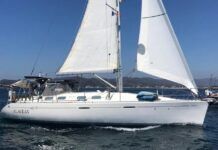











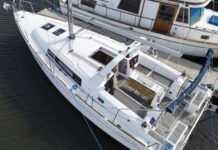
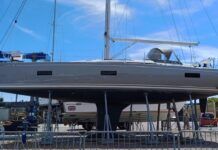

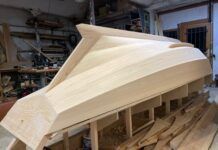
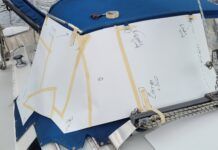

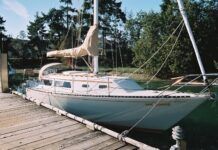



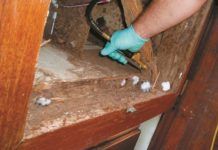









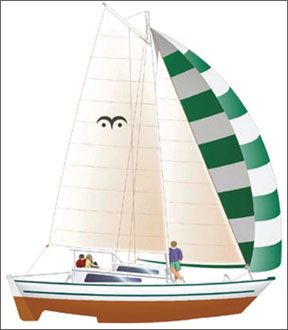








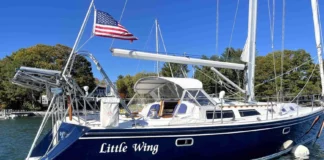















IMAGES
COMMENTS
Aug 8, 2015 · re: Review of a Wharram Catamaran I bought plans for a Farrier F-31 back in 1995. Finances due to divorce and child raising put those plans on hold for over 10 years.
Feb 11, 2015 · Hi! I own a Wharram Pahi 42. We bought her about 10 years ago now from the original owner/builder. I'd always dreamed of building a wharram, but as other posters have said, you can buy a used one usually much cheaper, and you get on the water immediately.
Oct 24, 2010 · This diehard pitch in support of adventure is infectious, and Wharram spells out how a handy, but not professionally trained, do-it-yourselfer can succeed with his designs. The semi-hooked can order “study plans” of one or more of the Wharram lines, and the subject of this review-the Tiki 30-is part of the Coastal Trek series.
Aug 10, 2015 · Re: Review of a Wharram Catamaran I bought a set of plans for a Tiki 26, bought all the material (excluding the resin) and then didn't built one. I used the material (marine ply) to built 2 other boats, one a 15' cabin boat the other a 9' dinghy .
Jan 14, 2008 · The Wharram Tiki 21 Catamaran I decided to go back to a simpler kind of sailing for 2006 after loosing Intensity, my Grampian 26 monohull cruiser to Hurricane Katrina in 2005. I've long been fascinated with James Wharram catamarans and built one of his smallest designs the Hitia 17 beachcruiser, back in 1997-98.
adventure is infectious, and Wharram spells out how a handy, but not profes-sionally trained, do-it-yourselfer can succeed with his designs. The semi-hooked can order “study plans” of one or more of the Wharram lines, and the subject of this review— the Tiki 30—is part of the Coastal Trek series. These study plans afford greater
Feb 9, 2001 · I must thank Lee Shipley, Ben Mullet, Colin Flynn for their recent discussion on aspects of Wharram Catamarans on our Web Forum between 16 January and 4 February (under headings NARAI Mk IV and Tiki 46 Rig). Lee Shipley for writing about the advantages on open decks, i.e. no or minimum deck cabins, Ben Mullet
Mar 26, 2011 · The catamaran designs that British multihull pioneer James Wharram first created for amateur boatbuilders in the mid-1960s were influenced by the boats he built and voyaged upon during the 1950s. These “Classic” designs, as Wharram termed them, feature slab-sided, double-ended, V-bottomed plywood hulls with very flat sheerlines and simple ...
Jul 23, 2005 · He used to claim that no ocean going Wharram has flipped yet - I hope that this is still the case. There is a lot of sense and experience in James W's rationale, however I think that other catamaran designs have progressed a long way in the meantime since the Wharrams first came about.
May 3, 2009 · Say what you will about Wharram catamarans, but show me another multihull design with the proven seaworthiness of his Tiki range. Nothing comes close to the number of ocean passages successfully completed in these simple boats. Even the Tiki 21, which James Wharram never intended as an offshore voyager, has circumnavigated.